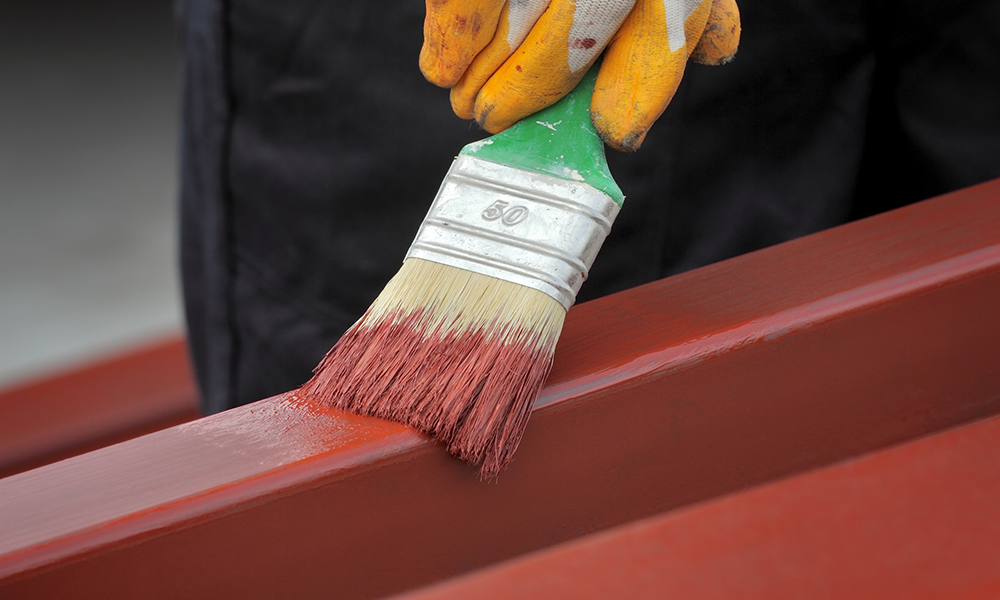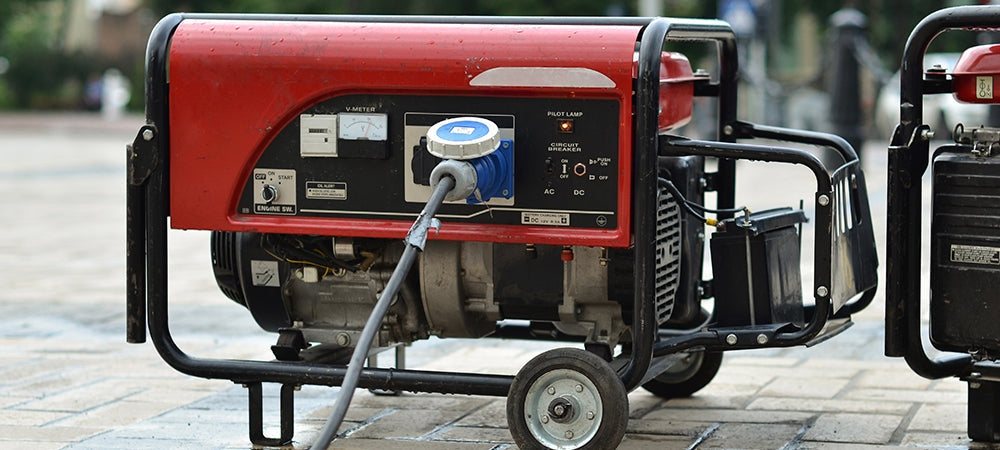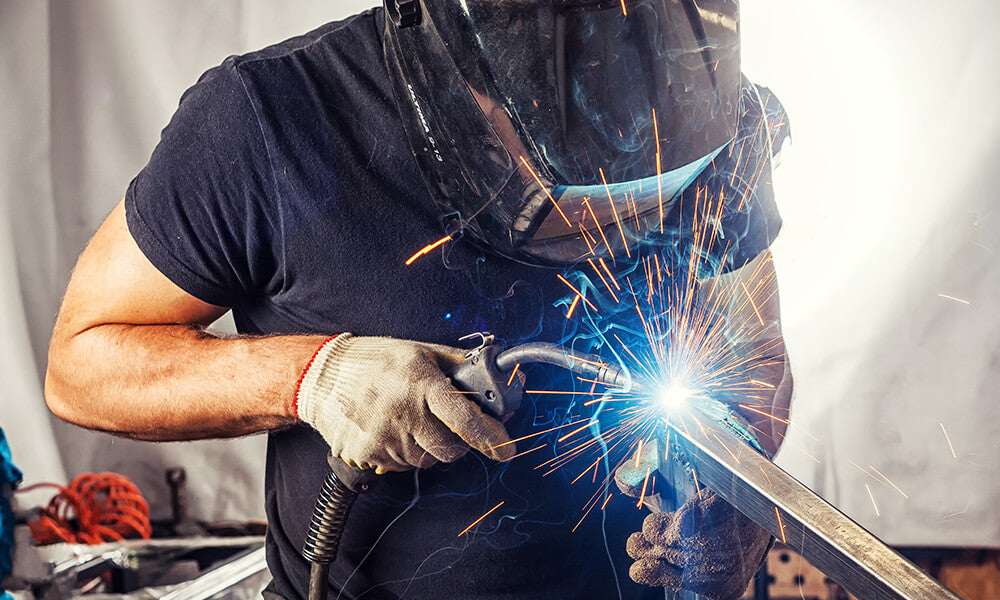It doesn’t matter if you weld so well that the mere sight of one of your beads makes grown men weep for joy—if you don’t protect it, your welds are basically worthless. That might seem a little harsh, but an unprotected weld is a prime target for rust, and rust will not only eventually compromise your weld, but all the unprotected base material near it.
Many welders don’t realize the amount of rust prevention methods that exist and how easy it can be to make sure your work stays working. In this article, we’ll cover the most popular and important preventative methods, from protective coatings to methods you probably didn’t realize were possible.
At Welding Supplies from IOC, our welding expert enthusiasts understand what you can weld is only as good as your gear. Through rust protection and preservation methods, your welding gear can stand the test of time. This will save you money and prevent rust and corrosion in the future. Keep reading to see how you can help prevent rust forming in and on your equipment.
Paint
We’re starting off with the most common solution. Painting is one of the easiest ways to ensure your welds don’t rust—when done correctly. Not all paints are created equal, so it’s important to know what to look for.
Before you begin painting, you need to make sure your surface is clean. Double check there’s no dirt or other particles. It’s usually smart to clean off the surface to remove any grease according to the instructions listed on your paint (different paints won’t work with certain types of cleaning chemicals).

If your workpiece was already painted, you should have already removed the paint from the areas you welded. So do you repaint the whole piece or just the area you removed? This really depends on a number of factors. If it’s a piece designed for looks, it can be difficult to blend your new paint into the rest of the piece. In some cases, it might be best just to remove all the paint and start over.
As for the type of paint, you want to make sure you use either a rust-proof primer or a combined rust-proof paint & primer. Make sure you follow the instructions on the paint can, whether you're spraying it or brushing it on. Most paints need multiple coats to work well.
The downside of paint is that it needs to be reapplied more often than other methods and doesn’t work for moving parts. There are ways to protect paint even more, which will cover below. Overall, however, the cost and ease of painting make it one of the most ideal solutions for many welders, and provides a boost that helps to stop rusting or at least delay it for a period of time.
Galvanization
Every welder should know about galvanized material—if not for applying it, at least for cleaning it off properly. Galvanized coats are terrible for your lungs and body when removed with a grinder and especially when welded. Galvanization is done using a layer of zinc, which corrodes, forming a protective surface on the base metal.
Galvanization is incredibly common, such as being used on just about every chain link fence in America. It’s cheap and usually protects for a long time. Most welders don’t realize you can actually apply a zinc coating yourself, which can be easily brushed on.

A lot of professionals will actually apply paint, then brush on an extra level of zinc for some serious protection. Just make sure you follow all the safety instructions. Galvanized fumes are nothing to take lightly and it’s important to make sure your lungs are protected—whether it’s a fume extractor, using a PAPR system, or galvanizing in a well-ventilated space.
Resin
Similar to paint, special resins can be used to protect your material. Resin can be difficult to apply correctly, but it can last quite a bit longer than paint and often gives a really nice finish. Resin also has some extra thermal and sound-dampening properties.
The downside of resin is that it’s more expensive than paint and—as mentioned—difficult to apply well. You’ll want to practice first before you apply it to your final piece.
Grease or Oil
As mentioned, paints don’t generally work well with moving parts. The paint can cause the part to move incorrectly and will often get stripped off anyways. For these types of pieces, grease, oils and even products like WD-40 or other corrosion inhibitors are used to prevent rust. These also often act as lubricants to prevent metal-on-metal wear and tear.

The most common examples of where grease or oil should be used is with automobile parts and industrial pieces (gears, etc.). Anytime something is designed for moving (hinges on a DIY grill, etc.), you should be using grease or oil, not paint.
Powder Coating
This popular protective coating process tends to be a favorite for both its look and functionality. Powder coating is accomplished by spraying on a dry colored powder using a special gun that applies an electrostatic to the powder. This makes it stick to the negatively charged base metal surface. The coated piece is then baked, causing the powder to harden.

Because powder coating is baked on, rather than applied like paint, it leaves a uniform look without any sort of “paint lines.” This makes it look crisp and professional. Powder coating is also incredibly durable as far as rust preventative products go.
The biggest downside to powder coating is the equipment needed. Many welders will bring their pieces to a powder coating service instead of doing it themselves. Since the pieces have to be baked, they need to fit inside an oven. This means large pieces or ones that cannot be moved (fences, etc.), generally have to be dismantled to be powder coated.
Special Metals
What if, instead of protective coating, we just used bare metals that didn’t rust? That’s definitely an option! The two most common types of material for this are stainless steel and aluminum.
Stainless steel is created using a combination of materials that prevent it from rusting. The best part about this is that, unlike protective coats, if the surface is scratched, it still won’t rust. This is part of the reason that a lot of kitchen sinks use stainless steel.
The downside to stainless steel is that it’s expensive and tricky to weld without ruining its stainless properties. We’ve got a whole post about that, which you can check out here.

Aluminum is the other common type of material resistant to rusting. Unlike stainless steel, aluminum is quite affordable. The downside to aluminum is it’s difficult to weld correctly. Realistically, only AC TIG can weld aluminum effectively. Up until the introduction of the new Miller Multimatic 220 and ESAB Rebel 205, this meant welding aluminum with a multiprocess unit wasn’t possible.
Some experts argue that welding aluminum is only considered difficult because welders generally don’t use or practice with it. As aluminum is being used more and more instead of steel, we might see a shift in the overall opinion and commonality of welding aluminum.
Anodizing
This is where we get into the “Dr. Frankenstein” levels of protective coating. Anodizing means you electrolytically apply a metal oxide to your material, protecting it from rust. Generally, anodizing is only done by professionals using special equipment. However, that hasn’t stopped DIYers from giving it a shot.
Just as a side note, while the theory behind this video is sound, we cannot condone anodizing on your own. Mixing batteries, alligator clips and water together is always dicey. We are not responsible when your pants catch fire.
Conclusion
Whether it’s painting, powder coating or using aluminum, protecting your piece from rust is important in any project. If you are interested in welding aluminum, make sure to check out our in-depth article here with professional tips from the experts. As mentioned, you’ll need a machine that can TIG AC weld. Before you buy, make sure you always check at Welding Supplies from IOC for the best price.





